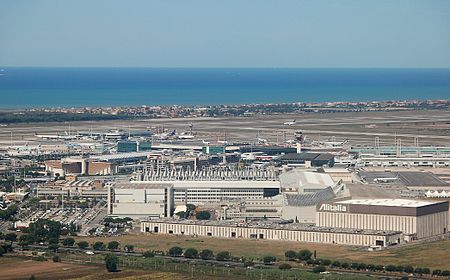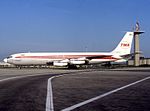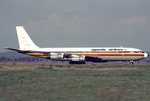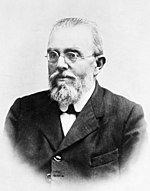Leonardo da Vinci–Fiumicino Airport

Rome–Fiumicino International Airport "Leonardo da Vinci" (Italian: Aeroporto Internazionale di Roma–Fiumicino "Leonardo da Vinci"; IATA: FCO, ICAO: LIRF), commonly known as Leonardo da Vinci–Fiumicino Airport, is an international airport in Fiumicino, Italy, serving Rome. It is the busiest airport in the country, the 10th busiest airport in Europe and the world's 49th-busiest airport with over 29.3 million passengers served in 2022. It covers an area of 16 square kilometres (6.2 sq mi).Together with Ciampino Airport, it forms the Rome airport system with 32.8 million passengers in 2022, the second airport system in Italy by number of passengers after Milan airport system with 49 million passengers in 2022. The airport is an ITA hub and was previously a hub for Alitalia, the defunct flag carrier and at one time Italy's largest airline. As of 2022, it has won the "Best Airport Award" in the category of hubs with over 40 million passengers, issued by Airports Council International (ACI) Europe, for three years in a row.
Excerpt from the Wikipedia article Leonardo da Vinci–Fiumicino Airport (License: CC BY-SA 3.0, Authors, Images).Leonardo da Vinci–Fiumicino Airport
Via Leonardo da Vinci,
Geographical coordinates (GPS) Address Nearby Places Show on map
Geographical coordinates (GPS)
| Latitude | Longitude |
|---|---|
| N 41.800277777778 ° | E 12.238888888889 ° |
Address
Via Leonardo da Vinci
00054
Lazio, Italy
Open on Google Maps









